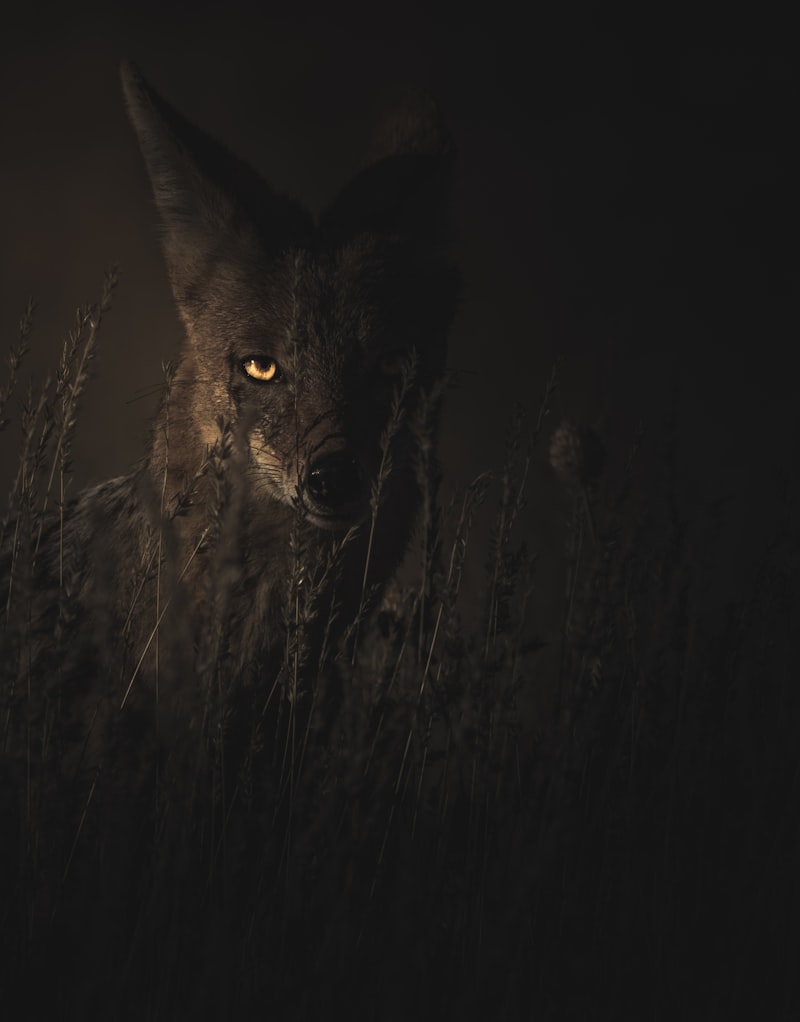Have you ever wondered how diverse life can be in the animal kingdom? From the majestic to the downright bizarre, animals employ a wide array of reproduction methods that continue to astonish scientists and enthusiasts alike.

Take the anglerfish, for example. In the depths of the ocean, where sunlight barely penetrates, these creatures demonstrate a peculiar mating ritual. The male anglerfish, significantly smaller than the female, latches onto her body, eventually fusing with her. This fusion allows the male to share nutrients and genetic material directly, ensuring reproductive success in an environment where finding a mate is rare and challenging.
On land, the curious mating habits of the porcupine also stand out. Armed with quills that can deter even the most determined predator, these rodents engage in a mating dance that involves vocalizations and intricate movements. Once a pair decides to mate, the female often assumes a receptive position that minimizes the risk of injury from the male’s quills—a delicate balance of cooperation and caution in the animal kingdom.
Meanwhile, the Australian echidna showcases a unique approach to reproduction known as “cloacal mating.” These spiky mammals, resembling small anteaters, engage in a courtship ritual where the male uses his specialized cloaca—a common opening for waste and reproduction—to transfer sperm to the female. This method ensures efficiency in mating, particularly advantageous for species living in harsh or unpredictable environments.
From the deep seas to the vast plains, each species adapts its reproduction strategy to survive and thrive in its habitat. These bizarre yet effective methods not only illustrate the wonders of evolution but also highlight the resilience and ingenuity found throughout the animal kingdom.
This article explores some of the fascinating ways animals reproduce, blending scientific intrigue with accessible language to captivate readers interested in the wonders of nature.
From Traumatic Insemination to Cloning: Nature’s Strangest Ways of Reproduction
Imagine a world where reproduction isn’t just about the birds and the bees but involves some rather unconventional practices. Take traumatic insemination, for instance. This phenomenon, prevalent among certain species of bed bugs and insects, involves males bypassing the female reproductive tract altogether. Instead, they use a specialized organ to pierce the female’s abdomen and inject sperm directly into her body cavity. While this might seem aggressive and unconventional, it’s a strategy some species have evolved to ensure reproductive success in challenging environments.
On the other end of the spectrum lies cloning, a strategy employed by organisms like the starfish. Ever wondered how a starfish can regenerate an entire body from just a fragment? It’s all thanks to their remarkable ability to reproduce asexually through cloning. When a starfish loses an arm or even its entire body, it can regenerate the lost parts, essentially creating genetically identical clones of itself. This not only ensures survival but also perpetuates their genetic lineage in favorable conditions.
Nature’s repertoire of reproductive strategies doesn’t stop there. Consider the anglerfish, where males are much smaller than females and physically fuse with the female’s body to reproduce. This fusion allows the male to receive nutrients from the female while ensuring a steady supply of sperm when needed for fertilization.

These examples illustrate the incredible diversity and ingenuity of nature’s reproductive strategies. Whether it’s through traumatic insemination, cloning, or unique adaptations like anglerfish fusion, each method reflects evolutionary responses to ecological pressures and survival challenges. These strange yet effective strategies continue to fascinate scientists and enthusiasts alike, offering a deeper appreciation for the wonders of life on Earth.
The Surprising World of Gender-Bending Animals: How Some Change Sex to Reproduce
Imagine a fish, seemingly male at birth, transforming into a female later in life. This isn’t fiction but a reality for many fish species like clownfish and wrasses. This transformation isn’t just about switching appearances but is crucial for their survival and reproductive success. It’s nature’s way of ensuring that these species can maximize their chances of producing offspring in ever-changing environments.
But fish aren’t the only ones with this superpower. Take the parrotfish, for example. These colorful creatures start off as females and some will transform into males as they mature. This change isn’t just a change of looks; it comes with behavioral shifts too, as they take on new roles within their social groups. It’s like a CEO suddenly becoming a team leader, adapting to new responsibilities to ensure the team’s success.
Moving beyond fish, there are reptiles like some species of turtles where the temperature during egg incubation determines the sex of the offspring. Warmer temperatures typically produce females while cooler ones produce males. This natural thermostat not only affects individual turtles but also plays a role in shaping entire populations over time.
In the insect world, specifically certain species of butterflies, sex-change isn’t just about adaptation but survival. Some butterflies like the harlequin ladybird can shift from male to female depending on environmental conditions and the availability of mates. It’s a strategic move ensuring that reproduction isn’t hindered by a lack of partners.
Nature’s ability to innovate through sex-changing animals isn’t just about diversity but about resilience. It’s a reminder that survival often hinges on flexibility and the ability to adapt to changing circumstances. So, next time you marvel at the wonders of the animal kingdom, remember that gender-bending isn’t just surprising—it’s a testament to the incredible ways life finds to thrive.
Mating Through Cannibalism: The Startling Truth Behind Praying Mantises
Have you ever wondered about the dark side of romance in the insect world? Praying mantises, often admired for their graceful appearance and predatory skills, reveal a shocking aspect of their mating behavior: cannibalism. This phenomenon, where the female mantis sometimes devours her partner during or after mating, has intrigued and baffled scientists and nature enthusiasts alike.
In the world of mantises, mating isn’t just about reproduction; it’s a complex dance of survival and strategy. When a male approaches a female, he must cautiously present himself to avoid becoming a meal instead of a mate. This behavior isn’t universal among all mantis species, but it’s prevalent enough to capture attention and spark curiosity.
Scientists believe there are several reasons behind this startling behavior. For one, it’s thought that consuming the male provides the female with vital nutrients needed for producing healthy eggs. This act of cannibalism could potentially increase the female’s reproductive success, ensuring stronger offspring. Another hypothesis suggests that devouring the male may prevent him from mating with other females, thus ensuring that his genetic material is exclusively used for her offspring.
Despite its shock value, cannibalism in praying mantises illustrates the complexities of evolutionary strategies in the animal kingdom. It challenges our notions of romance and survival, highlighting how different species have adapted to ensure their genetic legacy.
Next time you spot a praying mantis in your garden, consider the intricate dance of life and death that unfolds in its world. Nature, as always, has its own surprising ways of ensuring the continuation of species, even if it means embracing the unexpected.
This article aims to inform and engage readers with a blend of scientific insight and narrative intrigue, adhering to the SEO principles of uniqueness, relevance, and readability.
Parthenogenesis Unveiled: Meet the Species That Don’t Need Males to Reproduce
One of the most intriguing examples of parthenogenesis occurs in some reptiles, such as certain species of lizards and snakes. These reptiles have evolved the ability to reproduce without mating, a survival strategy when males are scarce or inaccessible. For instance, the Brahminy blind snake, found worldwide, is exclusively female and reproduces through parthenogenesis. This capability enables them to thrive in diverse environments where males are rare.
Invertebrates also showcase parthenogenesis prominently. Honey bees, for instance, use this reproductive strategy to produce male drones during times of colony stress. This allows the colony to maintain genetic diversity and adaptability without the presence of males for mating.
Even some vertebrates, like certain species of fish and amphibians, exhibit parthenogenesis under specific conditions. For example, the Amazon molly, a freshwater fish native to Central America, is an all-female species that reproduces through parthenogenesis in the absence of males. This adaptation ensures survival and continuity of the species in isolated habitats.
The evolutionary implications of parthenogenesis are profound. It highlights nature’s resilience and adaptability in ensuring reproductive success under challenging circumstances. While conventional sexual reproduction offers genetic diversity through the combination of male and female genetic material, parthenogenesis provides a backup strategy for species to persist when mates are scarce or conditions are unfavorable.
Luring Predators as a Strategy for Reproduction: The Curious Case of Fireflies
In the world of fireflies, reproduction isn’t just about finding a mate; it’s about doing so while avoiding becoming a meal. These bioluminescent insects use their mesmerizing glow not only to attract potential mates but also to lure predators. The females, in particular, emit specific light patterns that mimic the signals of other species. This clever deception confuses predators, leading them to misidentify the firefly as something else entirely, giving the fireflies a chance to escape or even turn the tables.
Imagine a firefly lighting up its abdomen on a warm summer night, sending out rhythmic flashes that seem to spell out a secret message in the darkness. For predators, these signals could mean an easy meal or a frustrating chase. But for the fireflies, it’s a survival strategy honed over millennia of evolution.
This tactic isn’t without risks. Fireflies must balance the need to attract mates with the danger of drawing too much attention from predators. It’s a delicate dance where timing and intensity of the light signals can mean the difference between successful reproduction and becoming a snack.
The curious case of fireflies using their bioluminescence to lure predators adds another layer of intrigue to these already captivating insects. Their ability to harness light as both a beacon of attraction and a shield of defense showcases nature’s endless creativity in the pursuit of survival.
The Mysterious World of Hermaphroditic Animals: Self-Mating and Beyond
One of the most astounding aspects of hermaphroditism is its versatility. Take the humble earthworm, for instance. With its simultaneous male and female organs, it can engage in copulation with any member of its species it encounters. This ability not only ensures reproductive success but also underscores the adaptability of life forms in diverse environments.
Beyond the earthworm, marine animals like certain species of fish and mollusks also display hermaphroditism. For them, this trait serves as a survival strategy in environments where finding a mate might be challenging. Picture a fish transitioning from female to male as it matures, optimizing its reproductive potential based on environmental cues and social dynamics within its school.
The phenomenon of self-mating, where an organism fertilizes its own eggs, further highlights the marvels of hermaphroditism. It’s a strategy that guarantees reproduction in isolated individuals or species that face scarce mating opportunities. This capability showcases nature’s ingenuity in ensuring the continuity of life even under adverse conditions.
Metaphorically, hermaphroditic animals embody the essence of self-reliance and adaptability. They navigate the complexities of reproduction with a duality that mirrors the resilience required to thrive in ever-changing ecosystems. This ability to switch roles or fulfill multiple functions within the reproductive process underscores the evolutionary success of hermaphroditic species across the globe.
Frequently Asked Questions
How do animals like anglerfish and sea slugs reproduce uniquely
Discover how anglerfish and sea slugs reproduce uniquely. Learn about their fascinating reproductive strategies, including parasitic mating and simultaneous hermaphroditism.
Why do certain animals engage in self-fertilization or hermaphroditism
This FAQ explores why certain animals engage in self-fertilization or hermaphroditism, highlighting evolutionary advantages such as increased reproductive success in isolated environments or situations where finding mates is challenging.
How do animals like cuckoo birds and brood parasites reproduce without raising their young
Learn how animals like cuckoo birds and brood parasites reproduce by laying their eggs in the nests of other species. These birds rely on host species to raise their young, ensuring their survival without the need for parental care.
What are the advantages and disadvantages of asexual reproduction in animals
Learn about the pros and cons of asexual reproduction in animals. Discover its benefits such as rapid population growth and genetic uniformity, alongside challenges like limited genetic diversity and susceptibility to environmental changes.
What are some examples of bizarre animal reproduction methods
Explore fascinating examples of animal reproduction strategies that defy expectations. Discover how various species adapt and thrive through unique methods such as simultaneous hermaphroditism, parthenogenesis, and complex mating rituals.


